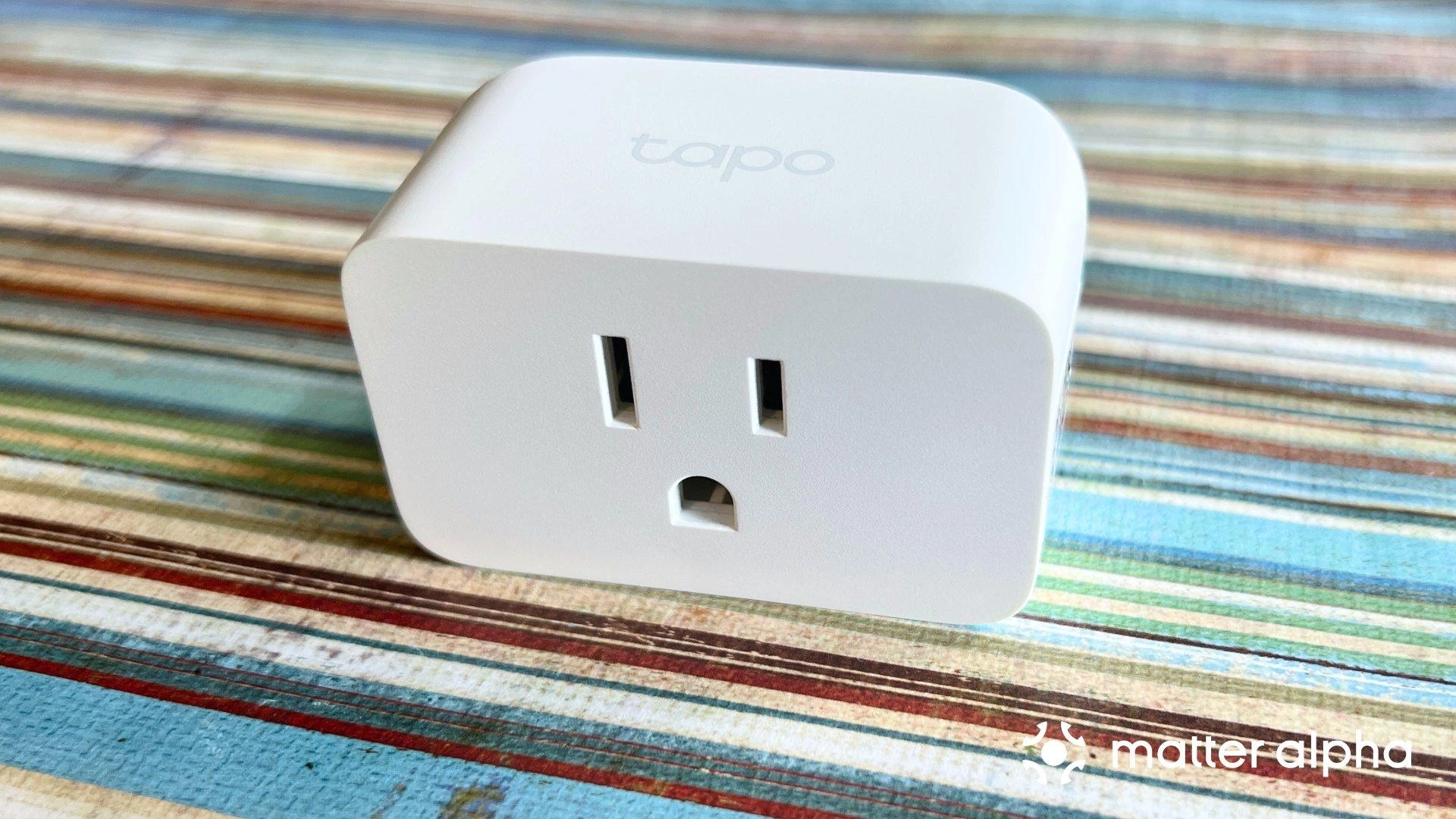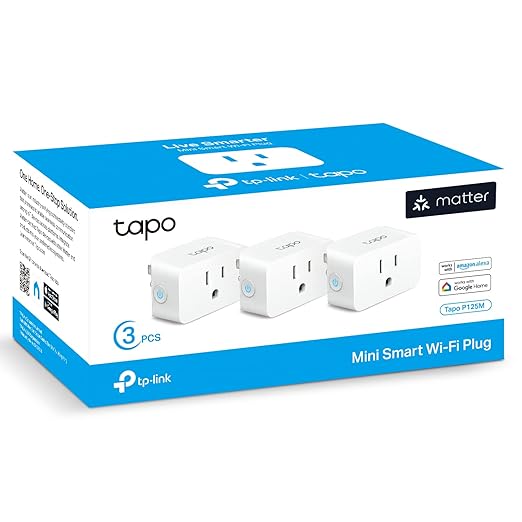If you're like me, you are on a never-ending quest to automate every aspect of your smart home. However, as fun as it is to add appliances like coffee makers and air purifiers to scenes and routines, adding smart capabilities everywhere can take quite a toll on your wallet.
So when you want to fulfill your automation desires economically, you'll need to turn to devices like the Tapo P125M Mini Smart Wi-Fi Plug—which I've been testing in my home for a few months. At just under $20—and sometimes as low as $10 during sales and multi-packs—Tapo's smart plug sure looks like a winner.
Does the adage—you get what you pay for—ring true with the Tapo's plug? Or is it one of the best Matter-compatible smart plugs around? Let's find out.
Tapo P125 Mini Smart Wi-Fi Plug Unboxing and Design
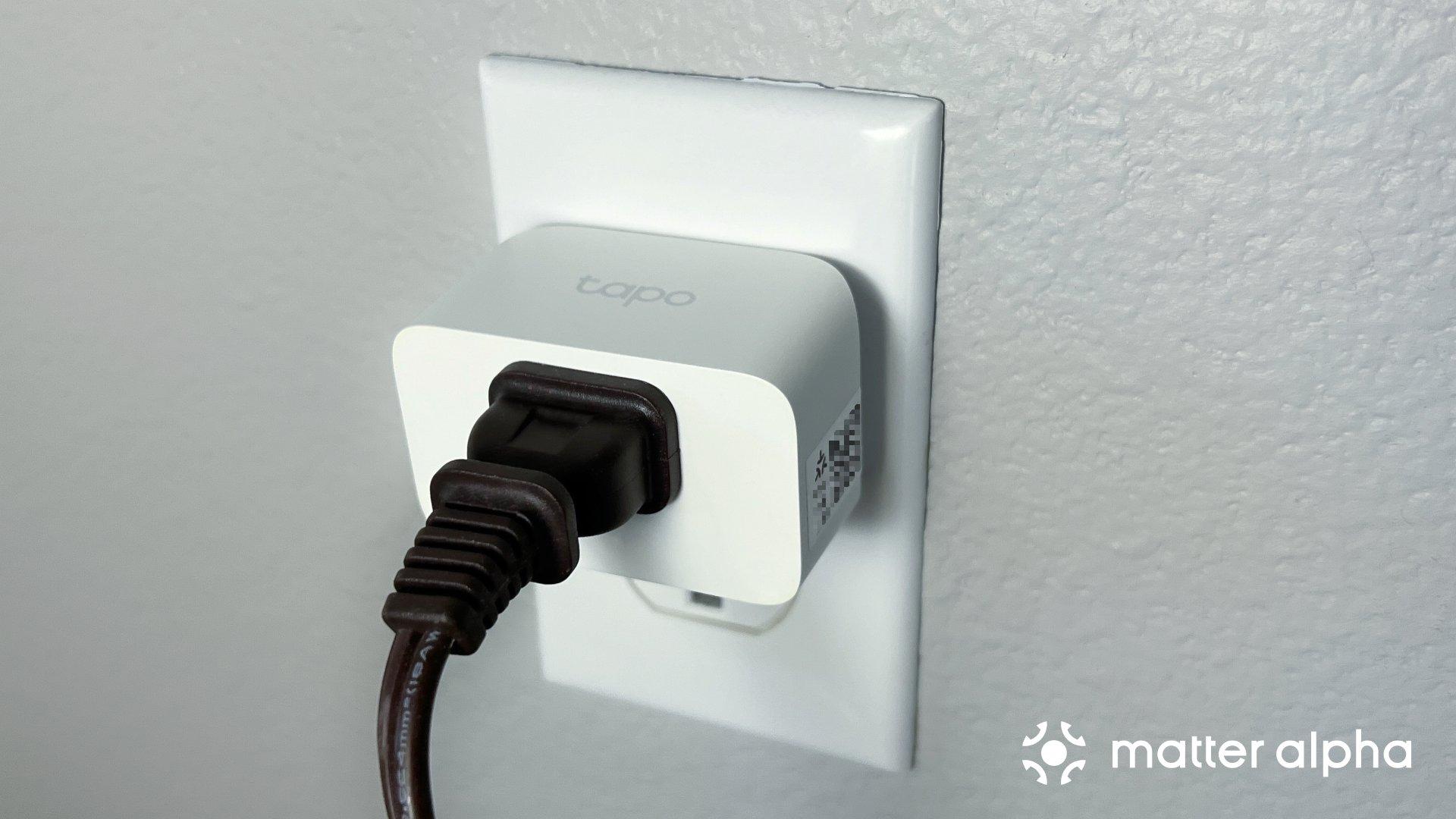
Like its outdoor counterpart—the P400M which we recently reviewed—unboxing the Tapo's plug doesn't yield too many surprises. Inside the box are two quick-start guides, a spare Matter pairing code sticker, and the star of the show, the P125.
True to its name, the Tapo Mini Smart Plug is incredibly tiny, measuring just 2.4 x 1.5 x 1.3 inches, making it the smallest Matter-compatible option that we have seen to date. The small size allows the P125 to provide its smart benefits without blocking other receptacles, and you can easily fit two on the same outlet if needed.
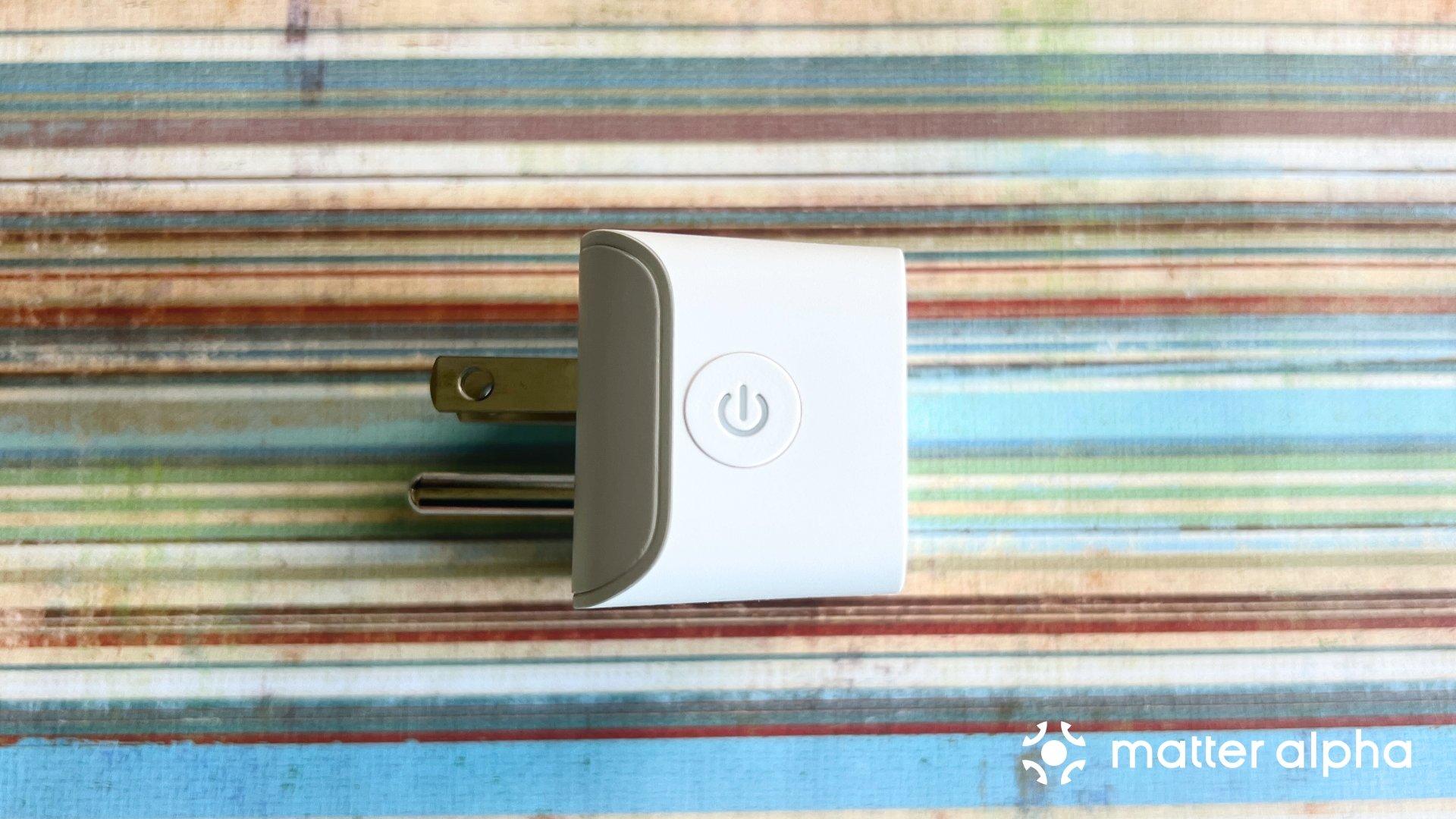
As with its packaging, the plug itself is rather unremarkable when it comes to aesthetics. Tapo's plug features minimal branding—which I certainly appreciate—with the company name only appearing on the top side of the unit.
The left side of the plug is home to a button/LED combination that acts as a status indicator and as a way of toggling power on-device. On the right is another Matter QR code, and finally on the bottom is your standard set of regulatory information and general specs, which we will dive into next.
Tapo P125 Mini Smart Wi-Fi Plug Specs and Connectivity
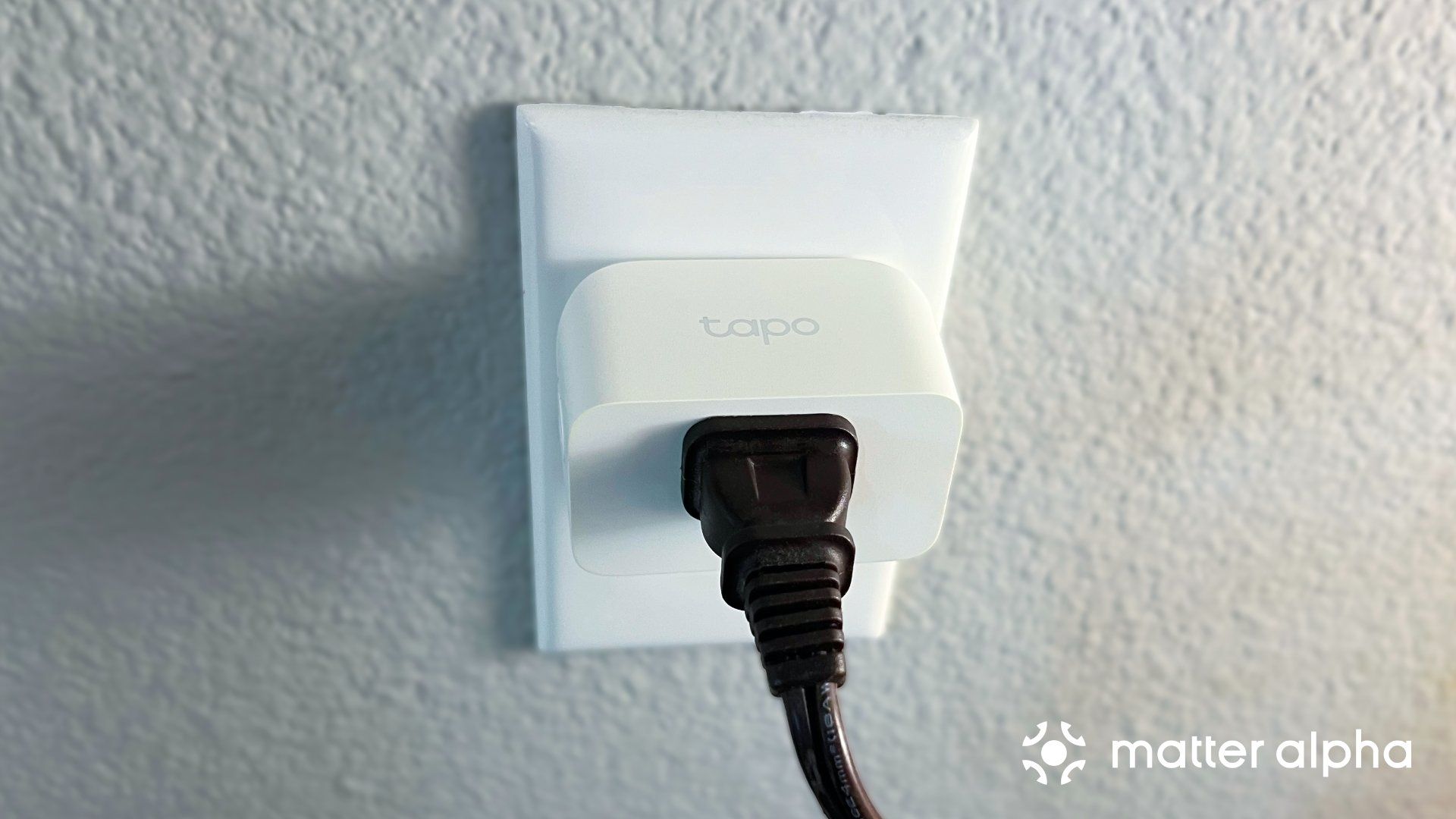
Even with its affordable price, the P125 still manages to offer specs that are similar to its competition. To start, the 120-volt plug that we tested supports electrical loads up to 1800 Watts, and it can handle 15 amps maximum.
Tapo's plug is rated for indoor use only with operating temperatures ranging from 32-104 degrees Fahrenheit. And, while it lacks weather resistance, the plug can withstand typical indoor moisture levels ranging between 10-90% relative humidity.
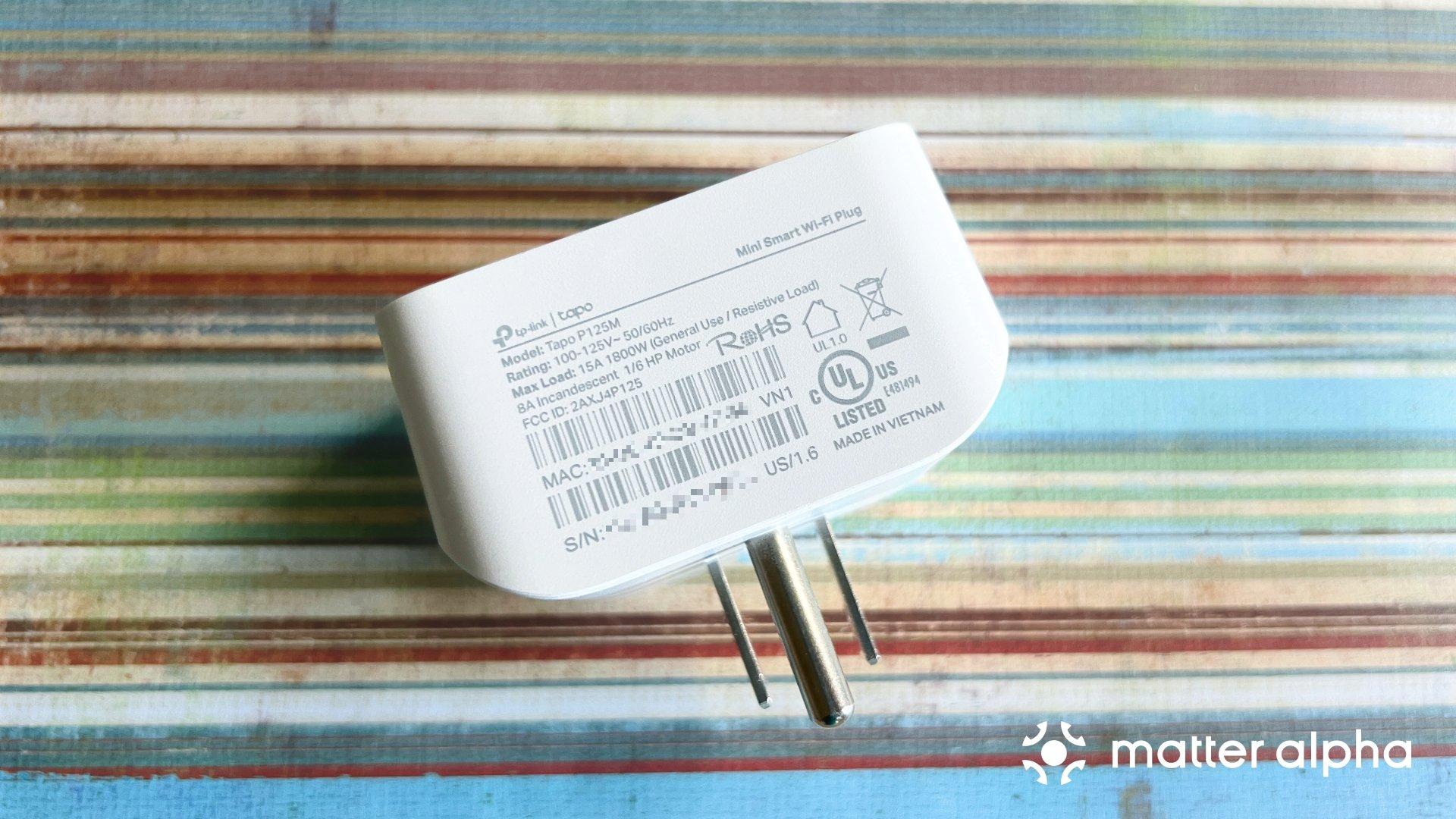
The P125 also offers a few safety protections, including flame-resistant materials in its frame. Perhaps the most surprising though is that the P125 is UL-listed, which means that it meets or exceeds nationally recognized safety standards—something that cheaper smart plugs often skimp out on.
Moving over to connectivity, Tapo's plug sports both 2.4 GHz Wi-Fi and Bluetooth 4.2 compatible radios. However, Bluetooth is only used for the onboarding process, and once connected, the plug relies on Wi-Fi to communicate with Matter and other smart home platforms.
Tapo P125 Mini Smart Wi-Fi Plug Setup
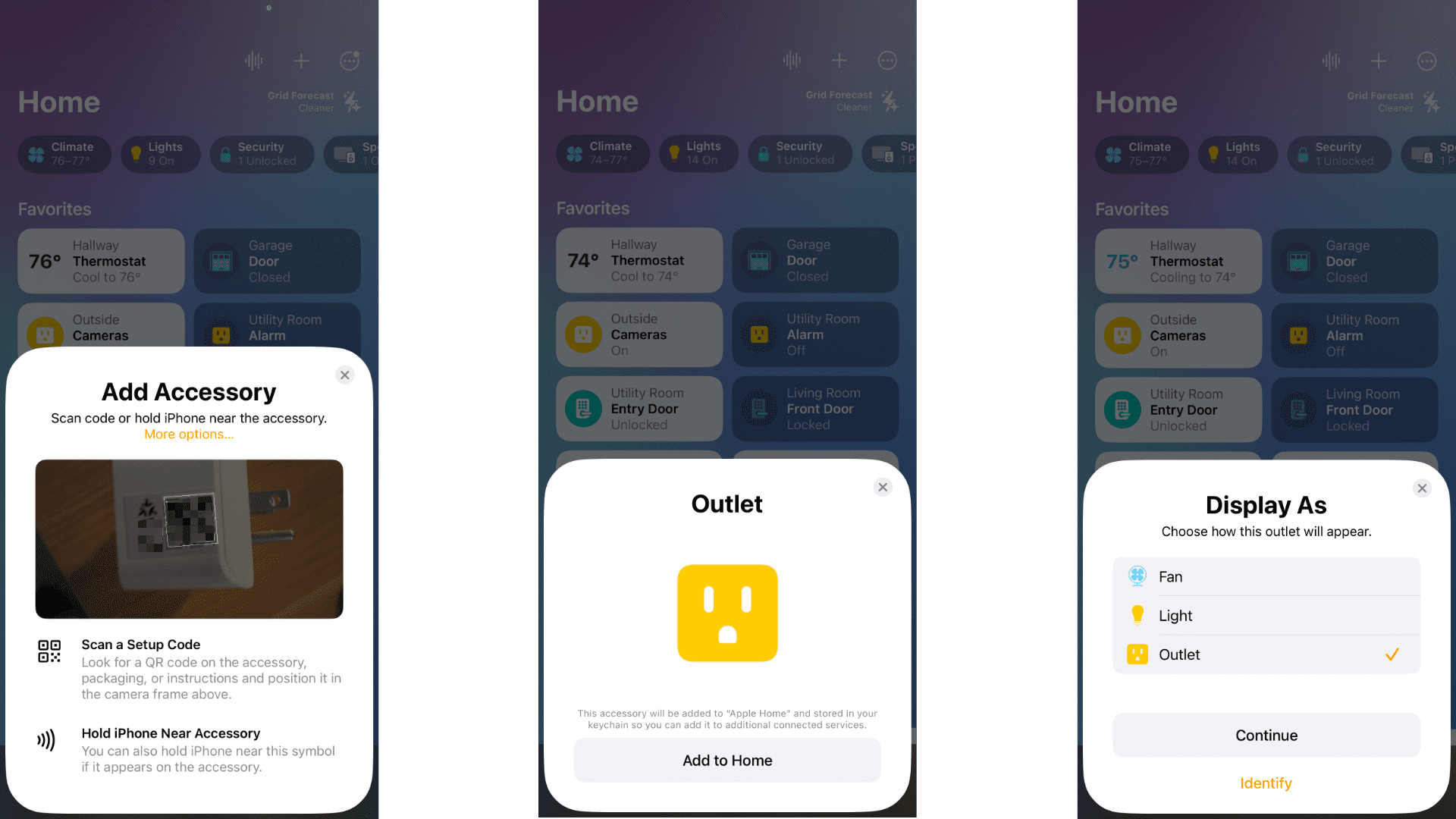
With Wi-Fi onboard, setting up the P125 was straightforward, only taking just a few moments to complete. My main smart home platform is Apple Home, which after scanning the included QR code, presented me with a set of familiar options for naming the plug and assigning a location in my home.
Despite utilizing Wi-Fi for connectivity, I loved how I didn't need to enter network credentials or having to create an account. The plug was ready for use right away after pairing, with no additional hoops to jump through like setting up a required hub.
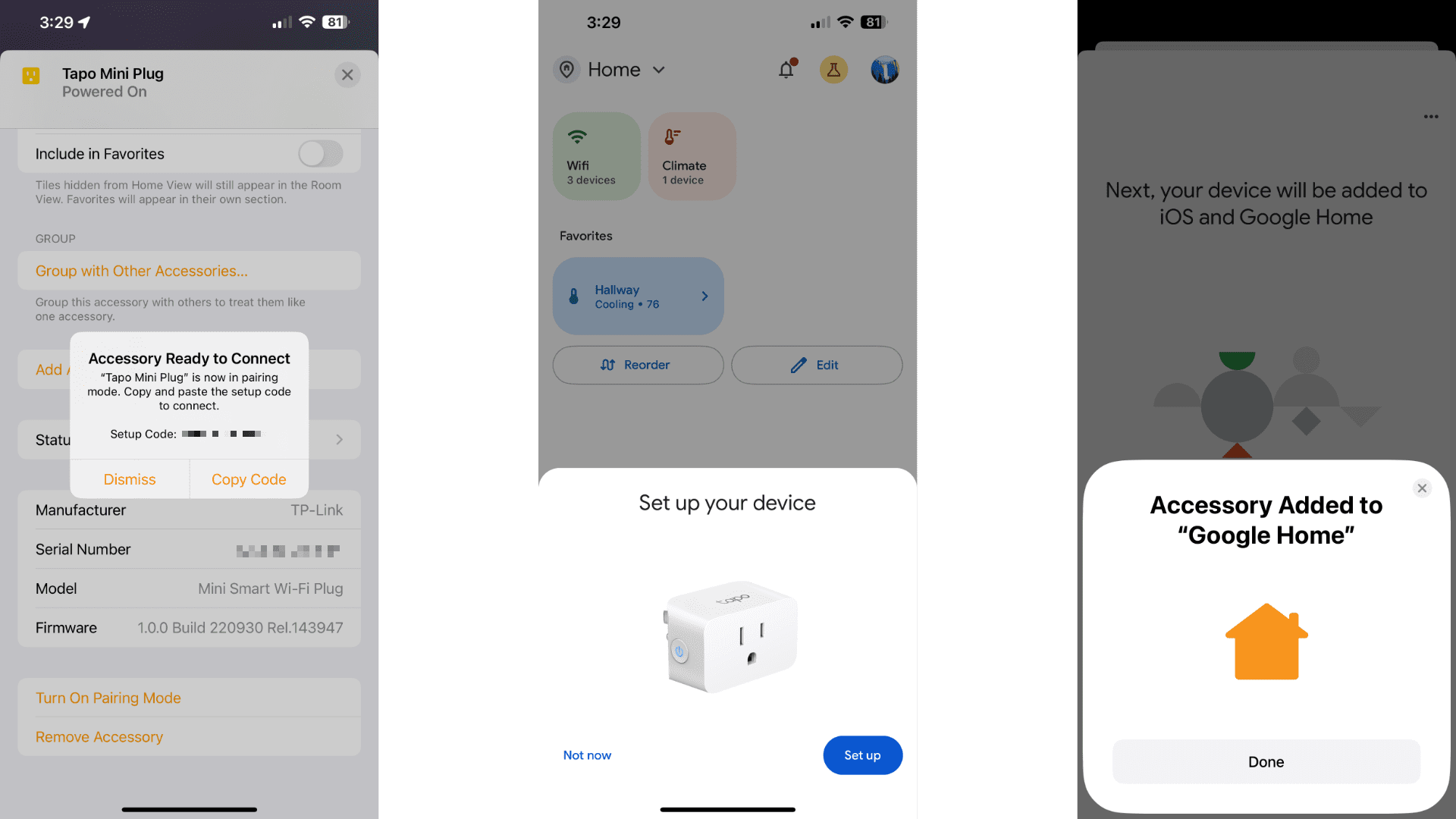
Of course, since we cover all things Matter, I also tried my hand at using Multi-Admin functionality to pair the plug to other platforms. This included Google Home which offers Matter compatibility through my Nest Wi-Fi Pro routers.
As expected, the Google Home app immediately found the plug and presented it via a slick pop-up card after launch. The pairing process for Google Home did require a few additional taps, but like Apple Home, worked without fail the first time.
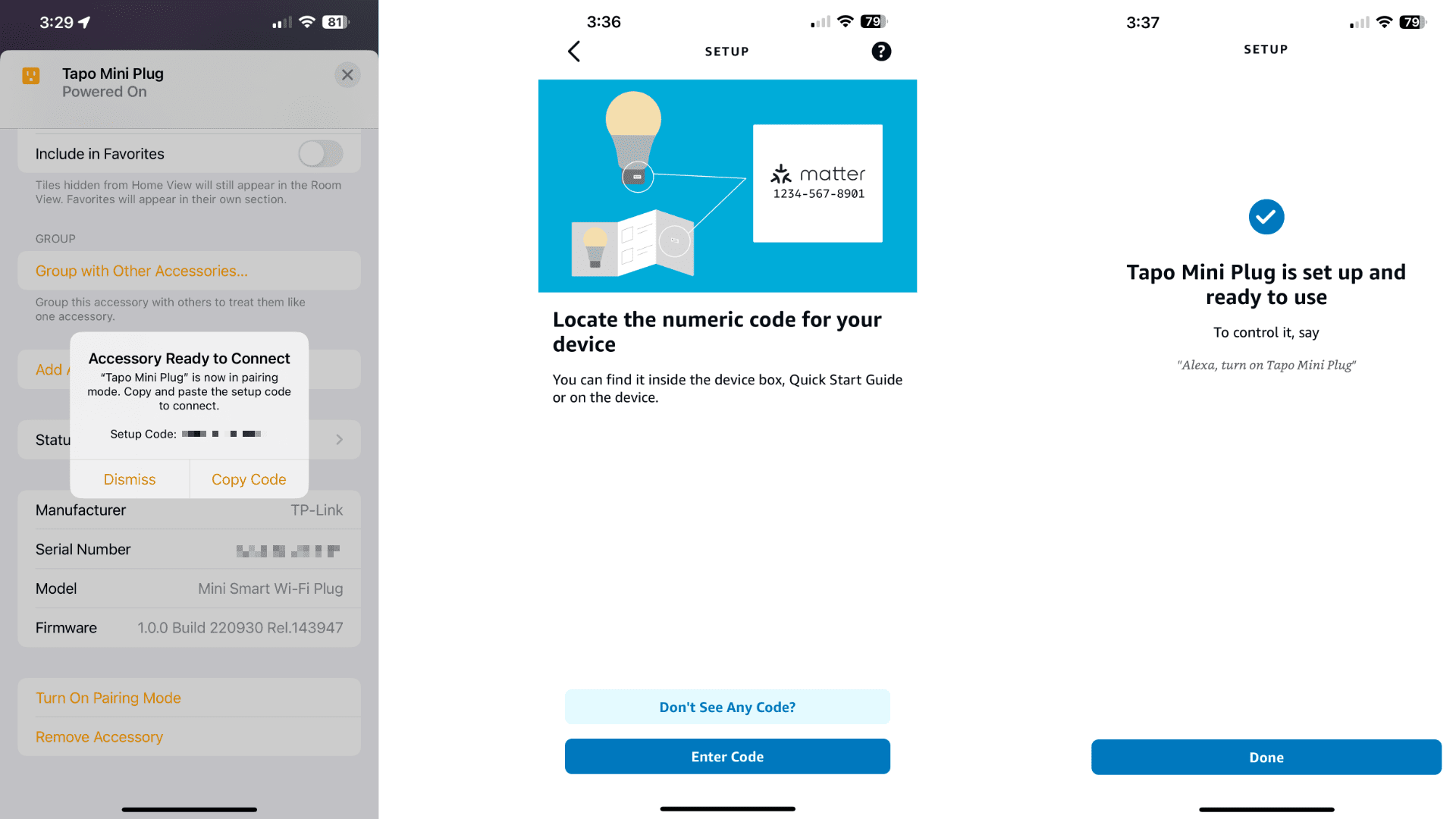
Pairing the plug to Amazon's Alexa via my Echo Pop also went smoothly, but it wasn't quite as quick and seamless as other platforms. After enabling pairing mode, I had to manually start the setup process in the Alexa app by selecting Matter device, and then I had to proceed through a bunch of prompts to finally complete the connection.
Amazon's setup process seemed to prioritize other legacy smart device integrations first as it didn't just default to the Matter style of pairing system. Again, while it wasn't difficult by any means, the different process makes it apparent that the company still has some work to do to catch up to other Matter platforms.
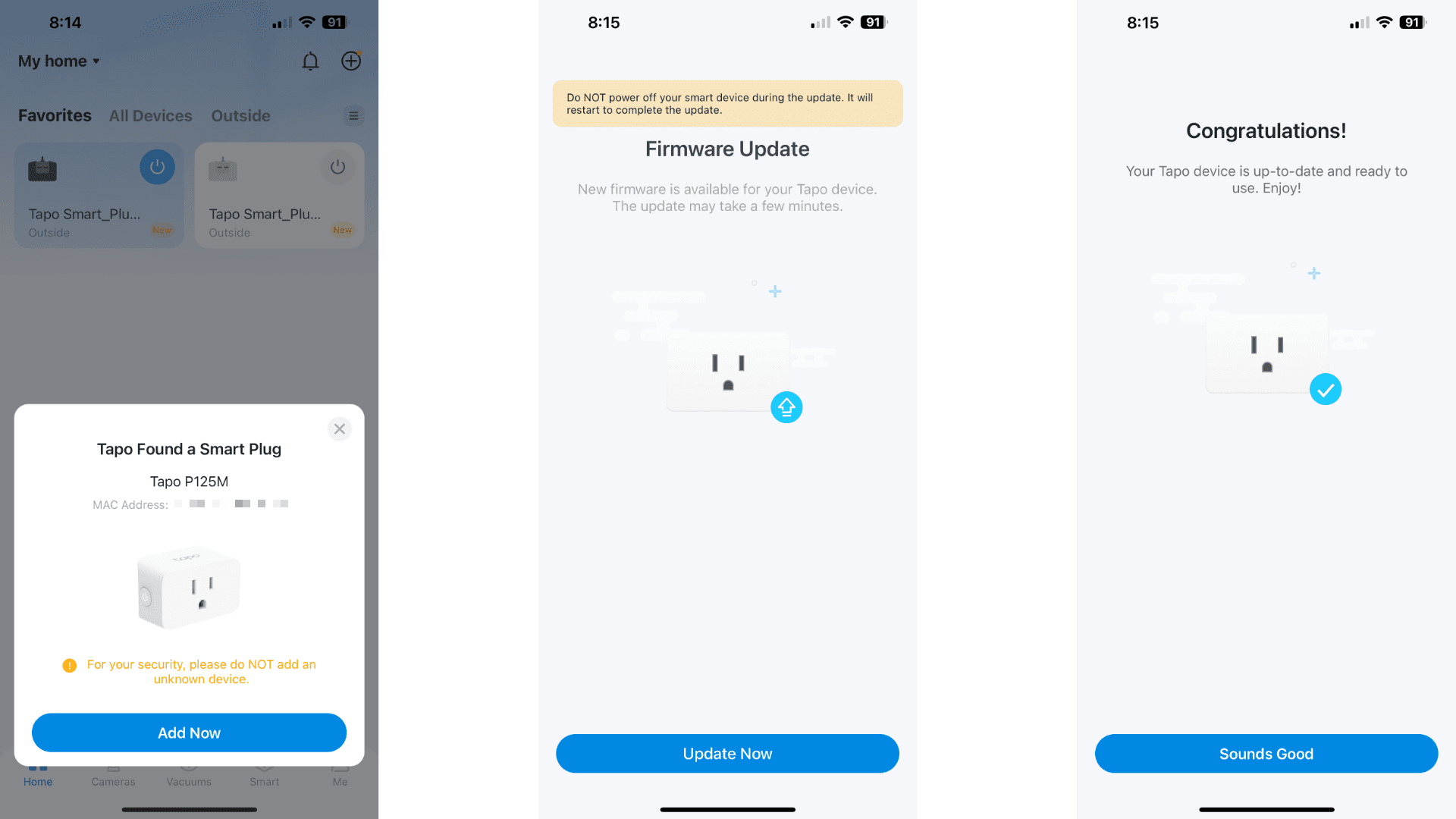
To round out the testing of the various setup processes, I also took the time to connect the plug to the TP-Link Tapo iOS App. I normally skip vendor's apps but with Wi-Fi in play, I wanted to make sure that the plug had the latest bug and security fixes.
Thankfully, I already had an active Tapo account setup so the app found the plug right away after launching the app. Tapo's app followed a familiar set of onboarding screens, with the main difference being that it offered to check for and apply any firmware updates—exactly what I was hoping for.
Tapo P125 Mini Smart Wi-Fi Plug Performance and Automation
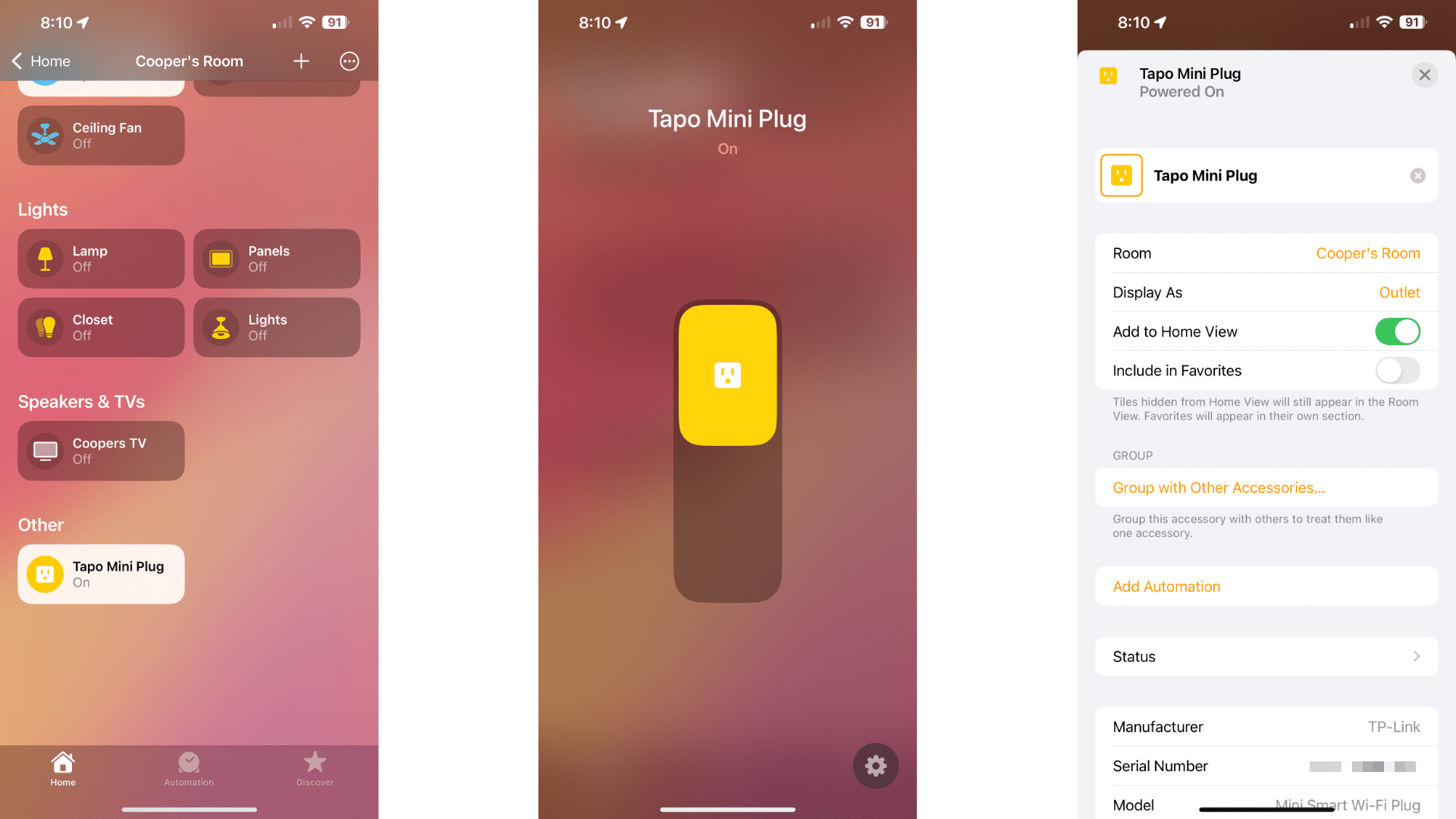
Performance of the P125 was—and continues to be—excellent, for the most part. Commands sent via Apple, Google, or the Tapo app all took effect extremely fast, often completed by the time I lifted my finger from the virtual button.
The same goes for automation, as I have relied on the plug heavily for a few critical time-based nightly routines in my home. I have yet to come across any issues with it dropping off my Wi-Fi network regardless of placement, and it triggers alongside other devices right on time every time.
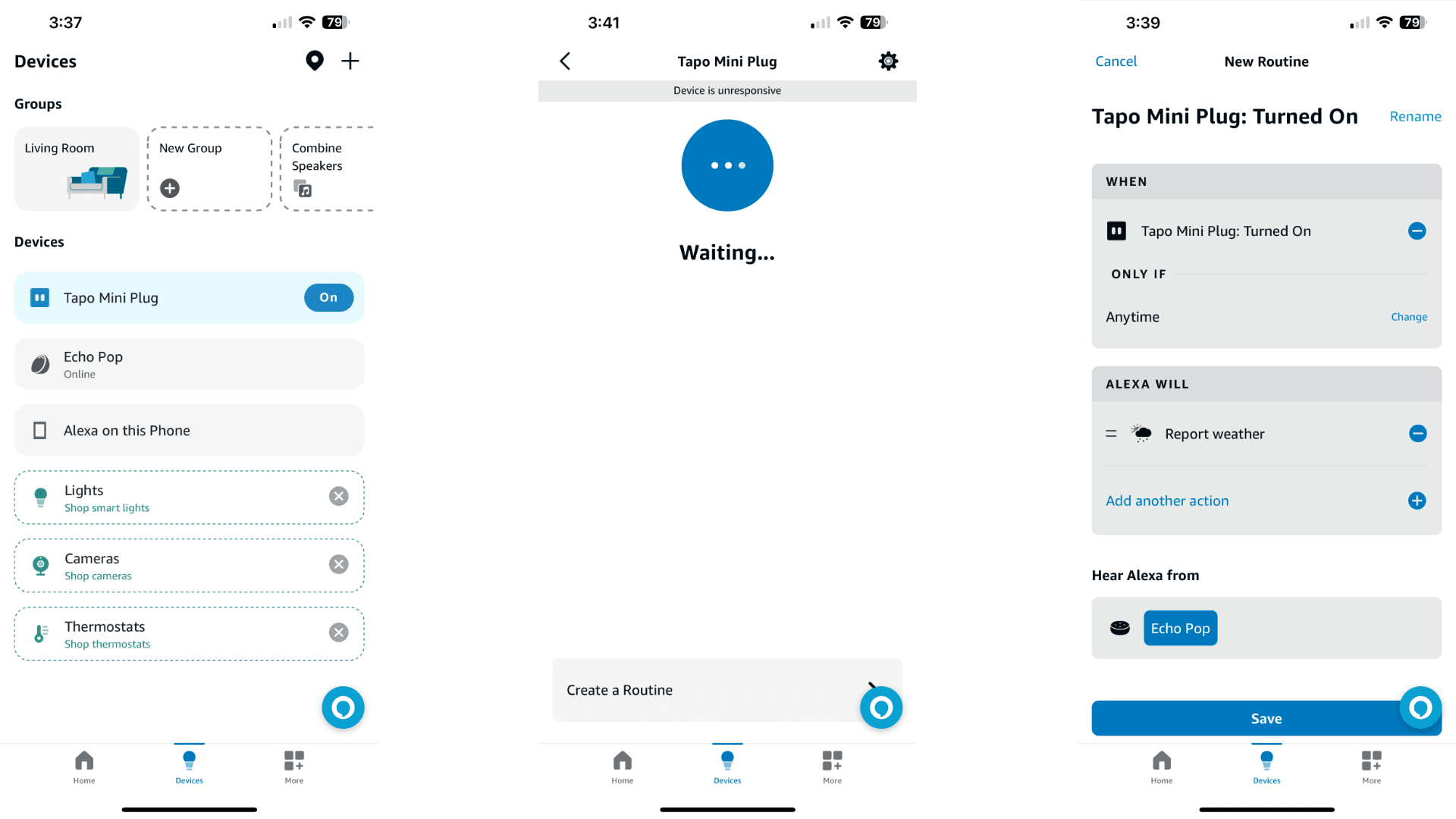
The one major exception to all of this was performance via the Amazon Alexa app. For whatever reason, the plug would become unresponsive randomly, leading to instances where the app would become out of sync with the device state if toggled through another platform.
The Alexa app also struggled with executing commands. Tapping the plug's toggle controls often resulted in a Waiting... message appearing, and a long lag time before the command actually applied—if it did at all. These issues most likely lie with having three Matter platforms connected at once, but it is something to keep in mind if you use Alexa.
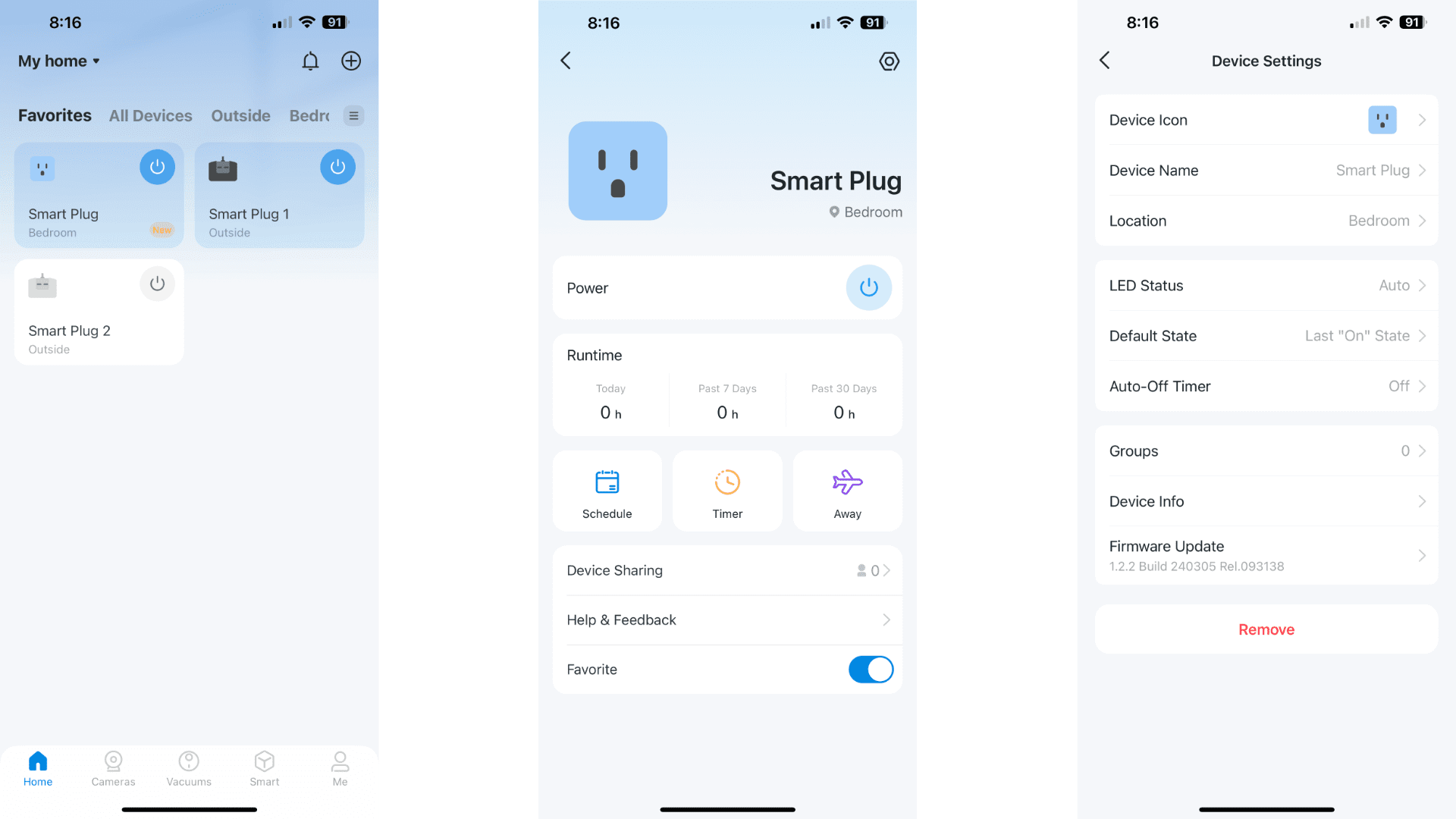
Feature-wise, I was impressed by the inclusion of several options available in the Tapo app. I love that the app allows for toggling the on-device LED to always off which is my preferred setting, and I like how you can set the plug's default state—perfect for power outages.
Pretty much the only thing missing with the P125 is energy monitoring, which is often found in premium plugs like the Eve Energy. This omission is obviously to keep costs down, so it's not something that anyone should expect, but it would be nice to see in future revisions.
Tapo P125 Mini Smart Wi-Fi Plug: Mini Plug, Mini Price
With a retail price of just under $20, the Tapo P125 is undoubtedly one of the best Matter devices that you can buy for your smart home. Sure, it doesn't have all of the bell and whistles like energy monitoring or the latest and greatest networking technology like Thread, but what it does have is solid reliability and excellent performance—which are the most important smart home metrics in my book.
The one area of concern with the P125 is the spotty Alexa integration through Matter Multi-Admin functionality. But as I said before, this appears to be more of a Matter/Alexa issue rather than the plug itself, so I wouldn't hold it against it unless you just have to have all of the major smart home platforms connected at the same time.
